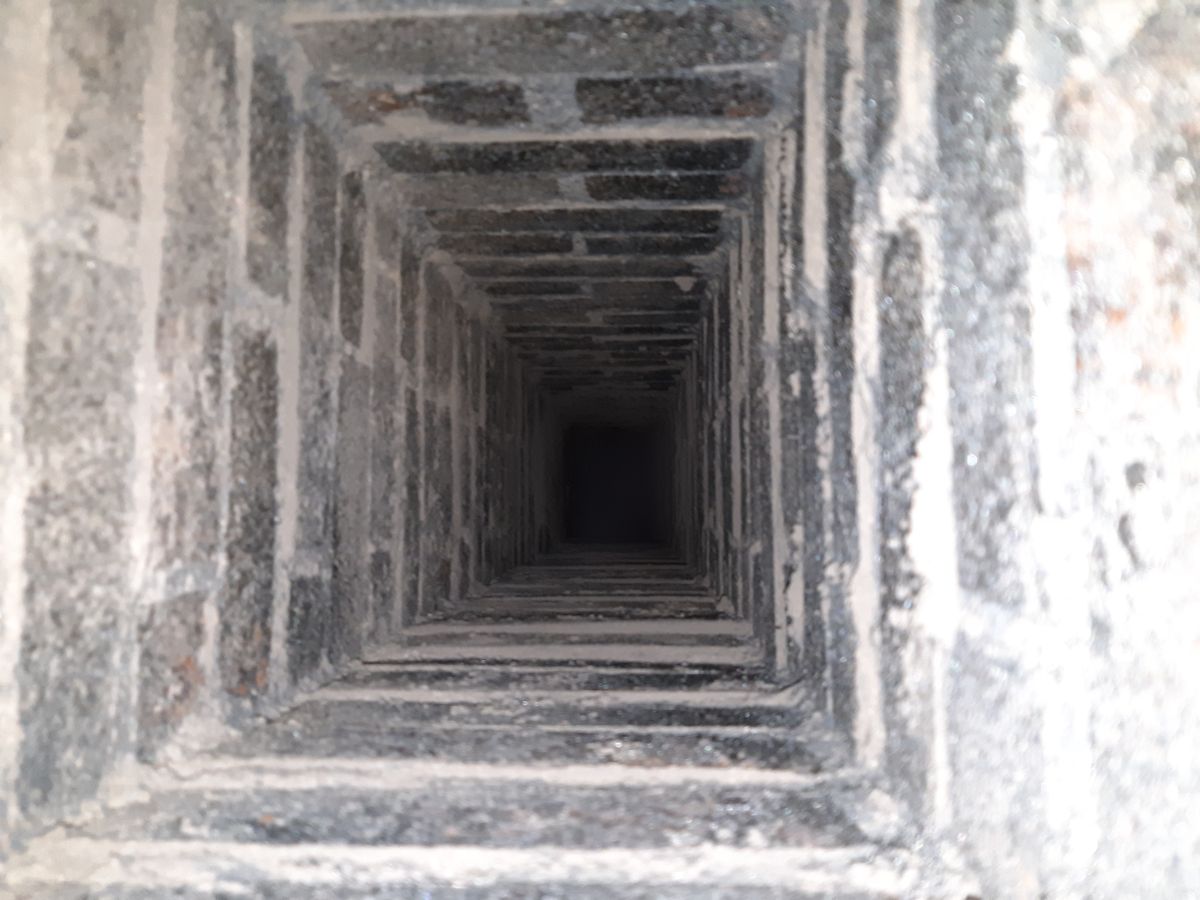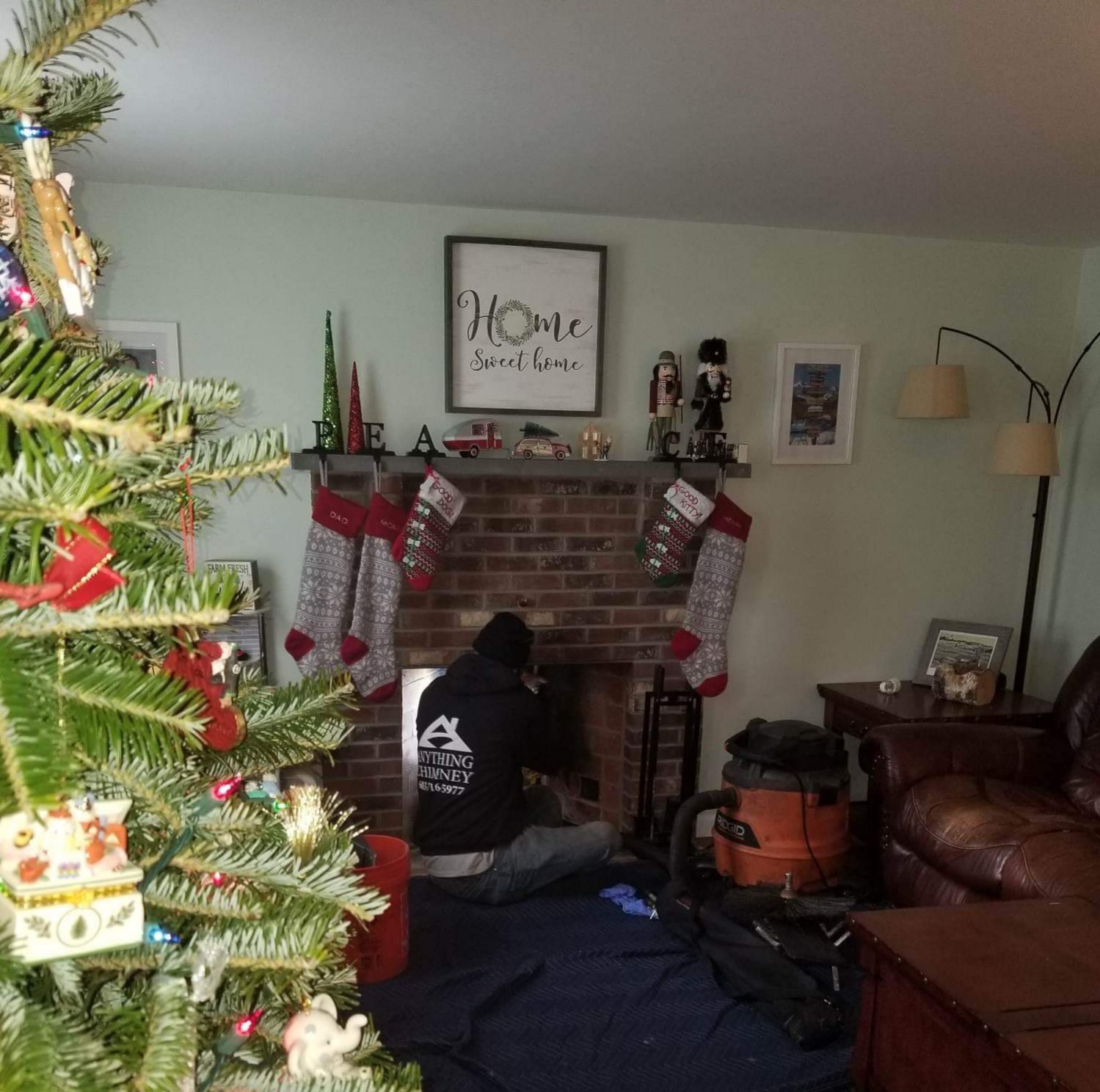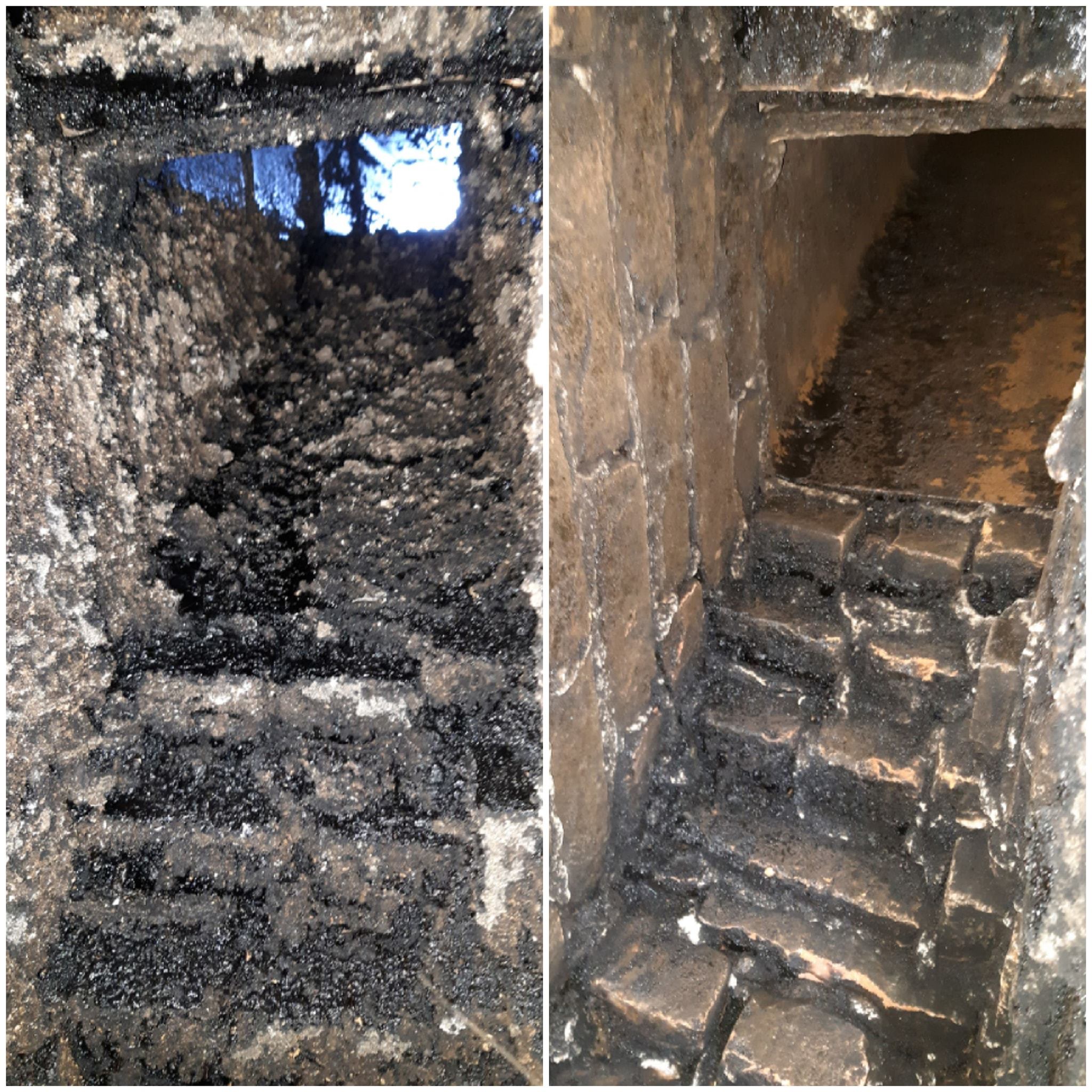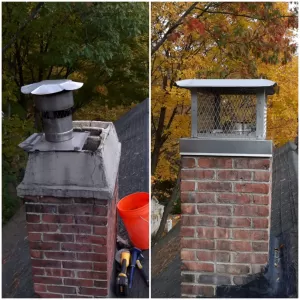Can You Clean Your Own Chimney In NH?

Yes, you can clean your own chimney in NH!
To determine what you will need to clean a chimney in NH, you must first determine what the chimney liner is constructed out of. A chimney lining system made out of clay, terracotta flue tile can be swept multiple different ways. This type of lining system can be swept with the old push broom style chimney brushes and rods or it could be power swept from the bottom with a series of flexible chimney rods and a polyurethane chimney spinning head. A flexible metal chimney liner, however, is not recommended to be swept with the push broom method because it can damage the liner. If the chimney is unlined, meaning you look inside of the flue and only see the inside of your chimney bricks, than the chimney should be lined before use. Using a chimney that is fully unlined carries many potential safety hazards and we would not recommend using it.
If you are unsure whether or not your chimney is lined, or if you are unsure of the condition of your chimney's lining system, please call Anything Chimney at 603-716-5977 and we would be happy to provide you with an in depth chimney inspection and cleaning if needed.
Book a NH chimney inspection and cleaning online at https://www.anythingchimney.com
Once you have determined what type of lining material has been used inside of your chimney, it is time to buy chimney rods. Chimney rods can be purchased at a variety of locations including amazon.com and home depot. The thickness of rod is generally the determining factor of what type of brush head will need to be used. Thicker rods are meant for push sweeping, while more flexible rods are meant for power sweeping with a polyurethane head. Some rod kits even come with a sweeping head in the kit. For power sweeping, the head that comes with the kit will sweep most of the commonly sized flues, but be sure to read the manual that comes with your power sweeping rods to make sure that it will properly clean the flue that you intend to clean. For manual brush sweeping, one size does not fit all. With manual brush sweeping, you will need to know the exact size of the flue that you intend to sweep. (Inner dimensions of the flue) This is because manual chimney sweeping brushes come in a variety of sizes. There are brushes for small square flues, a variety of rectangular shaped flues, and large square flues. There are also some for round flues when applicable. To accurately determine the size of your chimney flue, you may need to safely access your roof and top of your chimney in order to get a measurement of inner dimension of the flue that you desire to sweep.

Once your flue size has been determined, and the properly sized brushes and rods have been purchased, you are ready to sweep! But let's not forget, sweeping is only a part of the battle when it comes to chimneys! The real magic is in the chimney inspection. Having a squeaky clean chimney does not mean all too much if the chimney is unsafe in other ways. For that reason, we do recommend that if you are to clean your own chimney, you do so after having it inspected by a chimney professional.
Book a NH chimney inspection online at https://www.anythingchimney.com
When beginning the process of cleaning your chimney, you will want to make sure that you have a high powered shop vacuum with a HEPA rated filter attachment. You will also need to wear gloves and a respirator because creosote, the product that you will be sweeping off the inside of your chimney is highly carcinogenic. (It causes cancer) Having a second person at the bottom of the chimney to keep an eye on dust when sweeping from the top is highly recommended. When power sweeping from the bottom, you may be able to keep an eye on it yourself with the use of a flashlight.

When power sweeping from the bottom it is important to note whether or not there is a chimney cap on top of the flue you are cleaning. If there is a chimney cap on top of the flue, you may be able to push all of your rods up the chimney (connecting them as you go) until you hit the chimney cap. Once you have hit the chimney cap, you of course know that you are at the top of the chimney. Begin with a very light sweep around the cap by keeping the drill on a lower speed. (You don't want to knock the cap off!) Once the cap has been swept clean and you are certain your rods are back inside of the flue, you can increase your drill's speed while keeping a close eye on the amount of dust that is coming down the chimney. If the vacuum appears to not be capable of keeping up with the amount of dust produced by your drills speed, reduce the drill speed or press the trigger in shorter intervals. Continue this process until your rods are back down the chimney. With fireplaces it is important to note that there is an area called the smoke shelf directly behind the damper that will need to be cleaned out manually by hand. Do not spin your drill in this area or a very large amount of dust will be produced. Another important difference between fireplaces and other types of flues is that fireplaces have an area called a smoke chamber which at times can be built out of stepped bricks which creates a lot of tough to clean nooks and crannies. Cleaning these nooks and crannies thoroughly with your power sweeping brush is very important to do, but let it be noted that there has been updates to New Hampshire's standards on how fireplaces are to be constructed that actually forbids this type of stepped brick construction. The way it is now supposed to be built is by parging that area smooth with heat resistant refractory mortar. (Once you attempt to fully clean this area you will see why.) This area is nearly impossible to get fully cleaned when it is constructed out of non smooth stepped brick. There is a repair for it, however, called smoke chamber parging. If, in the process of cleaning your fireplace flue you notice that your smoke chamber is constructed of stepped brick, be sure to give Anything Chimney a call at 603-716-5977 so that we can give you a quote on properly parging your smoke chamber. An improperly parged smoke chamber can lead to increased creosote build up which can lead to a higher risk of chimney fire!

Once the flue, smoke chamber, and smoke shelf have been cleaned, the sweeping is complete! If you are still noticing large amounts of black creosote in the flue system, you can either try sweeping it again or using a chemical treatment to turn some of the baked on glazed creosote into a more flaky, powdery creosote. If you believe that your chimney will require a chemical treatment, book a chimney inspection with us online at https://anythingchimney.com and we would be happy to give you a quote on the chemical treatment, or to point you in the direction of some reputable products.
When performing the more traditional, and in our opinion, outdated method of manual push sweeping the first two things to keep in mind are whether or not the chimney flue takes a significant bend, and whether or not the rods get stuck within the first two feet. If the chimney flue takes a significant bend, we do not recommend this method. It may end up becoming more of a headache than it is worth if your rods get down the bend, but then are unable to get back up the bend. This can lead to a brush getting stuck. In general, we do recommend using the power sweeping system as opposed to the manual push broom system, as there are far more ways that the manual sweeping system can go terribly wrong for an inexperienced individual.

If you are determined to use the push broom method to clean your chimney flue, you will need to carry your set of rods up to the top of the chimney. Begin by inserting one rod with the wire sweeping head into the chimney flue. Push the rod down about one foot and try to reverse the rod. If the rod feels stuck, pull the rod out and either call a professional or try the power sweeping method. If the rod is easily reversible and the flue takes no significant bends, add a rod and continue pushing the rods down the flue, reversing the rods once every time that you add a rod to ensure that they are not going to become stuck. While you are pushing the rods down the chimney it is highly recommended to have another person at the bottom of the chimney to keep an eye on dust control. They will be able to let you know when to slow down or stop sweeping. This person should have the same type of HEPA filtrated vacuum as was mentioned above. Using your push broom and while communicating with the person at the bottom of the flue scrape the entire flue clean of creosote. If this is a fireplace the smoke chamber and smoke shelf will still need to be cleaned as well.
Depending on the flue or appliance that you have swept, you may also need to clean out the ash dump. The ash dump is located through a usually square metal door in the basement. The ash dump can be easily scooped out with a metal shovel and can be put inside of a non combustible bucket for disposal.
Again, chimney cleaning is very important to help prevent flue fires, but what is even more important is having your chimney inspected annually by a certified chimney sweep. A certified chimney sweep can let you know about any potential issues your chimney may have and recommend a repair for any major issues. Chimneys often need more than just a cleaning, so please feel free to book an inspection with us online at https://www.anythingchimney.com and we would be happy to give your chimney, fireplace, wood stove, or pellet stove a thorough inspection.
*This article is intended only as a detailed explanation as to the process of chimney cleaning and the different methods used to clean a chimney in NH. We always recommend calling a professional first, but we hope that this article has helped people to better understand the process of chimney cleaning and everything that goes into it. DO NOT attempt to get on your roof unless you know how to do so safely. DO NOT attempt to clean your chimney unless you fully understand the process. DO NOT clean your chimney yourself without having a professional chimney inspection. DO NOT use this article as a step by step guide to clean your chimney to avoid calling a professional. This article was written to be informative and to educate the average homeowner on all that goes into a NH chimney cleaning. Calling a professional is still what is recommended above all else.*


